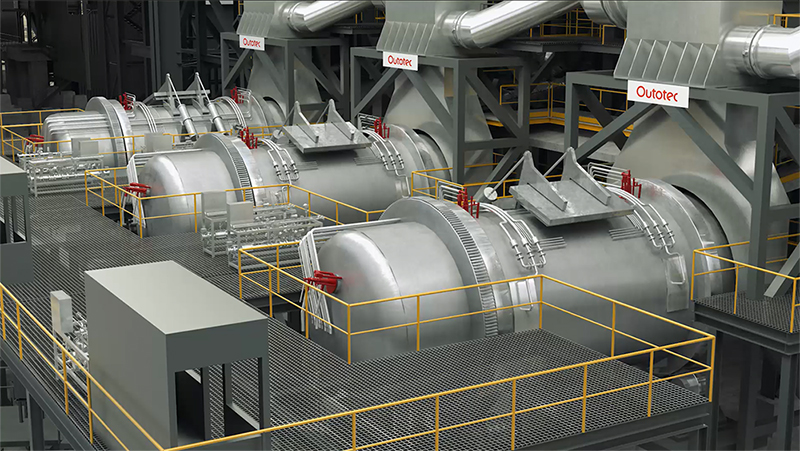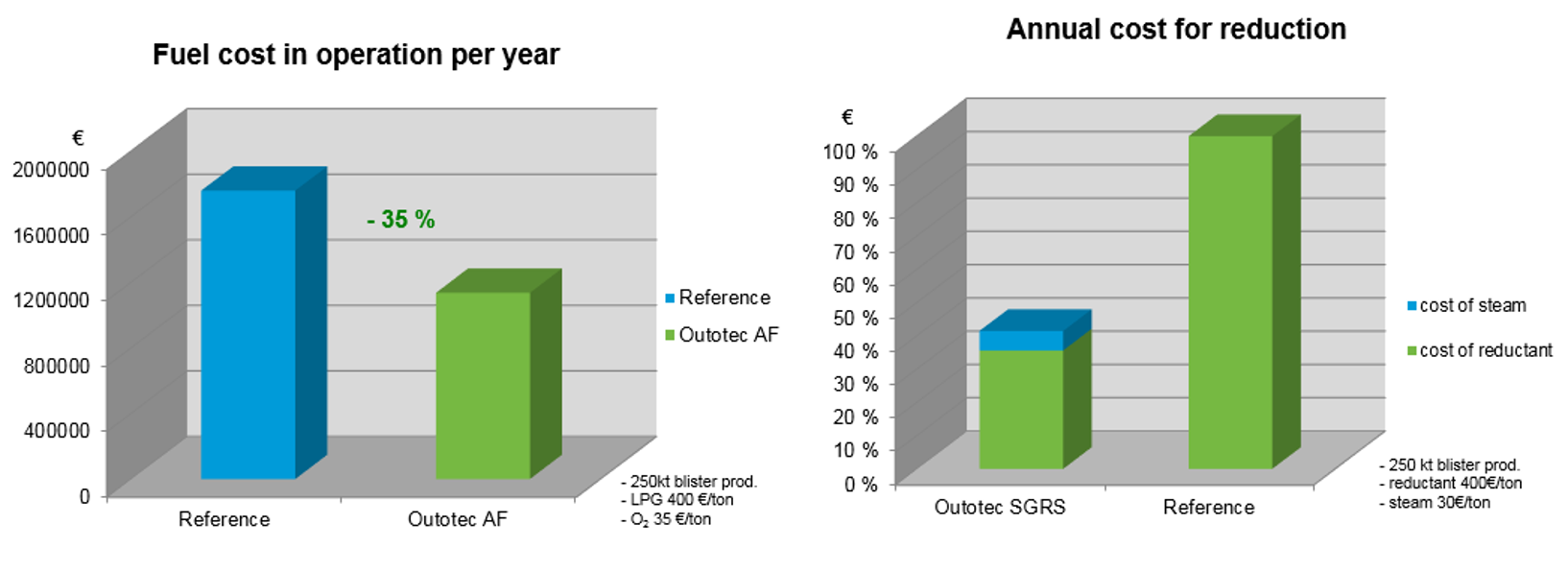Challenges in fire refining
The conventional fire refining process consists of an anode furnace capable of treating blister to anode copper through oxidation by air and reduction by reductant e.g. natural gas, LPG or diesel. However, in most cases controlling of the refining cycle is not optimized and Outotec has identified several areas for improvement such as:
- Over oxidation of copper leading to copper losses to slag and increased reductant consumption
- Poor reduction efficiency (typically 20-25 %) meaning high reductant consumption and unburnt carbon in the off-gases causing black soot
- Use of fuel-air heating burners for maintaining heat balance while a lot of energy is wasted into off-gases because of heating the nitrogen ballast of air
- Loss of furnace shell integrity over the years
Outotec Anode Furnace features
Outotec Anode Furnaces are available in different sizes depending on desired capacity and configuration. In our experience, dish-type end-walls are preferred due to longer brick lining lifetime and as springs are not used the required maintenance work is less. Outotec has designed a unique flexible riding ring connection which allows higher shell temperatures with less thermal stresses to steel mantle, which significantly decreases the risk of permanent deformations on the shell. An Off-gas incinerator can be positioned at the vessel shell or a separate chamber depending on the layout. A sliding cover ensures gas and dust emissions are minimized through the charging/skimming opening.
Porous plugs and an oxyfuel burner are standard equipment for the Outotec Anode Furnace. A Steam-Gas Reduction System can be implemented to bring major savings in reductant consumption in addition to significantly cleaner off-gases. If impurities such as arsenic and antimony are a problem, blister copper can be treated in the furnace by a soda/lime injection through tuyeres. For additional anode scrap melting, the furnace can be equipped with extra burners at the vessel shell. Off-gas cleaning can be done by a hot gas cleaning or wet gas cleaning concept, according to customer preference.
In the below left diagram the graph shows an operation fuel cost comparison between Outotec’s anode furnace and a reference furnace with LPG fuel. The savings with Outotec’s anode furnace come from its enhanced furnace design and oxyfuel burner usage. The graph on the right shows a comparison of costs between Outotec Steam-Gas Reduction system (NG+steam) and reference with NG only.
Text: Harri Talvensaari, Product Manager, Fire Refining, Outotec

